Climbing up Pyhäkuru rock formations & cycling with e-fatbikes to the eternally beautiful Tunturiaapa mire in Pyhä
In paid collaboration with Kestävästi kasvua kesään Itä-Lapissa -project
We woke up to a bright and beautiful morning in Pyhätunturi, the warm, soft touch of autumn blowing in the breeze. It gave a welcome contrast to the dark cavernous gorge on the side of the fell with grey, rugged edges spreading in different directions, exposing fascinating cracks and tunnels of various sizes. Wearing a sturdy harness and helmet, Karoliina set off to conquer these striking formations before our next very different type of adventure, namely a peaceful cycle on the charming bike paths of Tunturiaapa.
The impressive rock walls of Pyhäkuru rise behind a spectator stand and U-shaped sitting area, built on a slope beside a small road. Climbing structures and wires are visible along the rock wall. Looking up towards the heights excitedly, I almost chuckle out loud when a gleefully shrieking adventurer attached to a zipline glides above me. I can’t wait for my turn! In front of the sensational action is a small hut with a guide waiting to assist us. The guide gives us climbing instructions and wishes us a wonderful journey. Another employee waits on the slope ready to help if there are any difficulties. Extra help may be required if a glide falls short or there’s a problem with the safety locks.
We notice the diversity of the group waiting to start the adventure; people of all ages, even very small and brave children with their parents. Despite its exhilarating nature, this adventure is suitable for most people, with no previous climbing experience required. As long as you don’t have a fear of heights, an open mind and basic fitness level are enough!
The guide assists me and the others in the group with harnesses and helmets, and then we start a practice run. There are a wide selection of metal structures hanging from the wall, a wire going through them that encircles the hut.
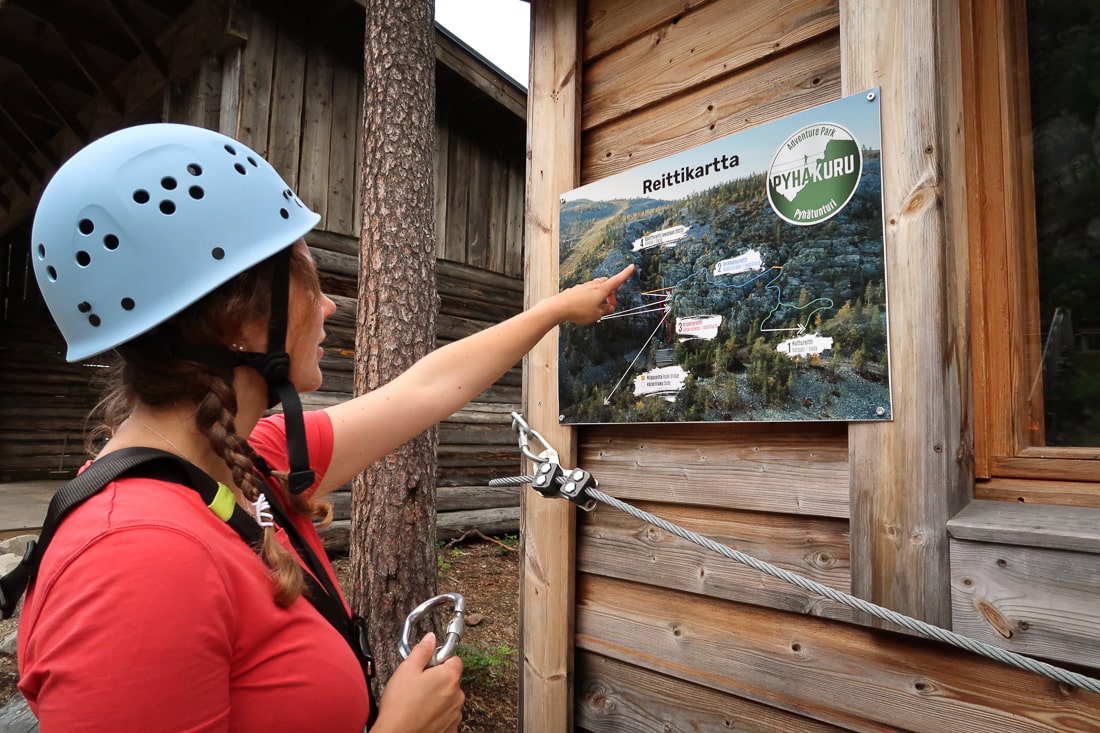
At the starting point, each climber clicks the carabiner attached to their harness onto the wire in the test course, following the route around the hut with great concentration. The guide explains how to get past each point on the route, as these same obstacles will be encountered along the route around the gorge. The exciting sounds of metal clanking soon fill the hut surroundings as all the participants ensure that they can get through the obstacles.
The course is designed to be extremely safe – it is practically not possible to get detached from the safety wire once you have attached yourself to it. As we get ready to begin the course, everyone is attached to the wire in a fool-proof way that will remain that way from start to end.
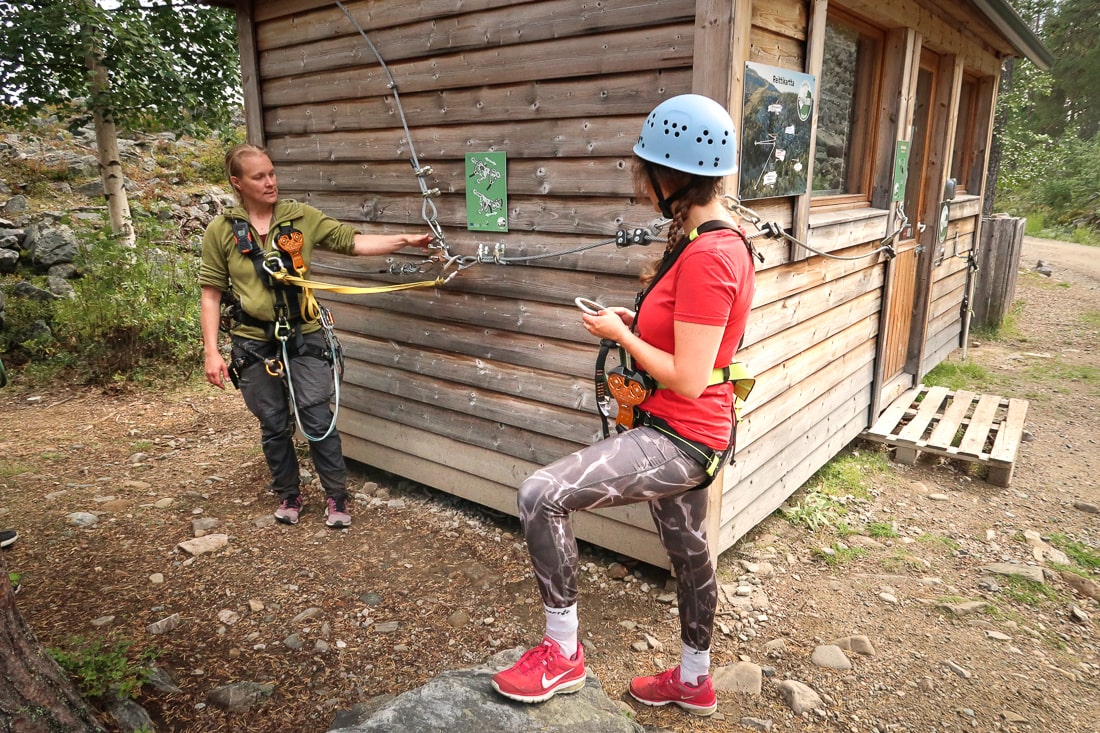
Off we go! The first stretch of the course runs in close proximity to the road – including the first zipline, a pleasantly mellow first run – and everyone can see how the climbers are doing. Soon after this, we ascend up and behind the rock wall. From below, the climbers get smaller and smaller until they disappear from view entirely for a while.
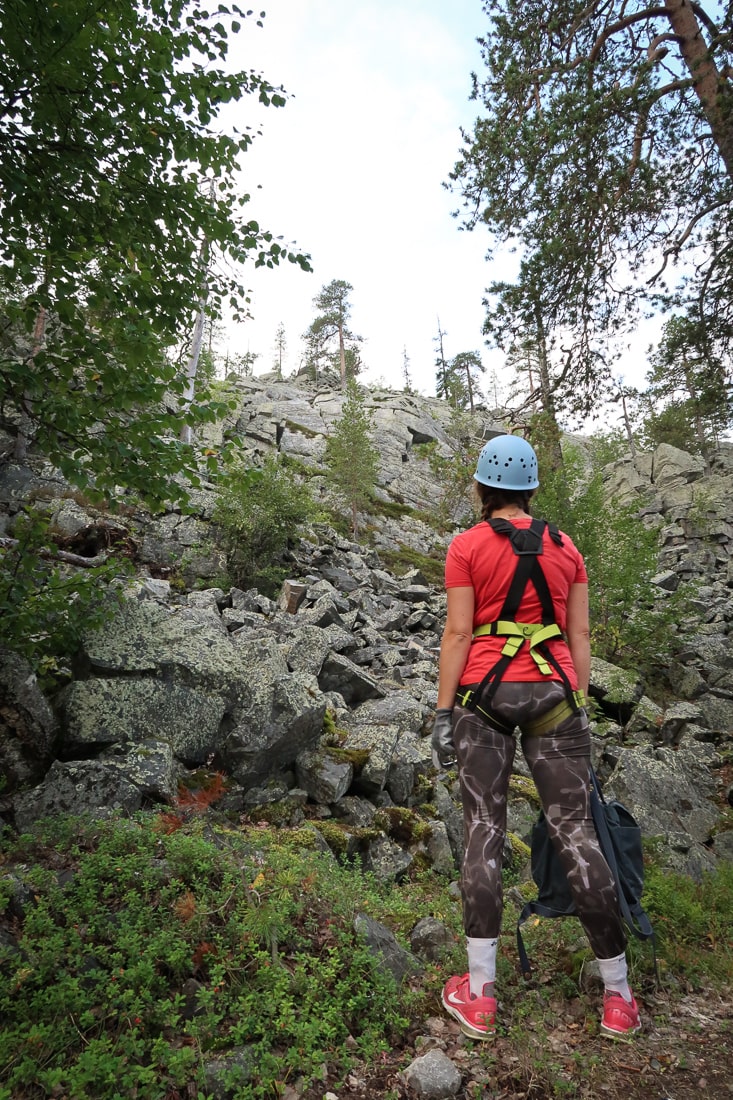
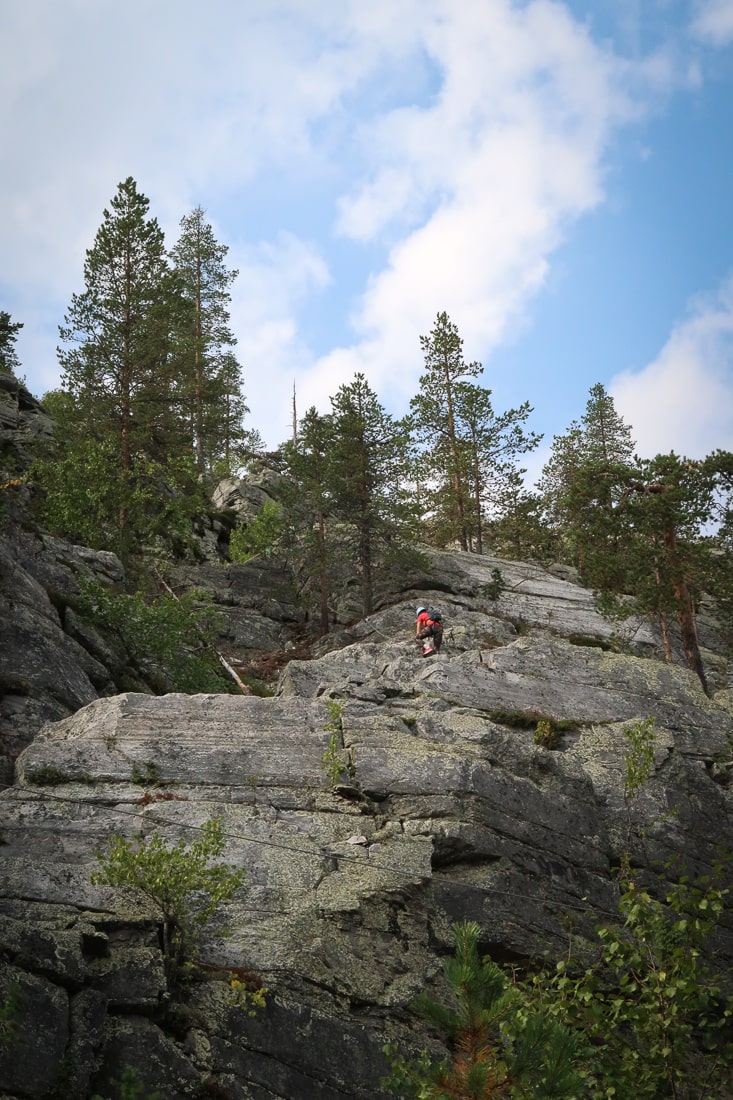
Pyhäkuru will leave you speechless as your mind fills with adrenaline. The actual size of the gorge is only apparent once you get here – it’s impossible to estimate just from pictures! Suspension bridges challenge your balance while the vertical steel steps attached to the cliff feel sturdy beneath you and lead straight up towards the sky from the grey depths of the gorge. The constant presence of the safety wire allows you to fearlessly throw yourself at the challenges knowing that there’s no real danger, even if it occasionally feels wild!
Passing other climbers has also been taught at the practice hut, in case anyone wants to stop somewhere for longer to mentally prepare, take pictures or pick blueberries. It’s handy when you can get your snacks straight from the cliff edge!
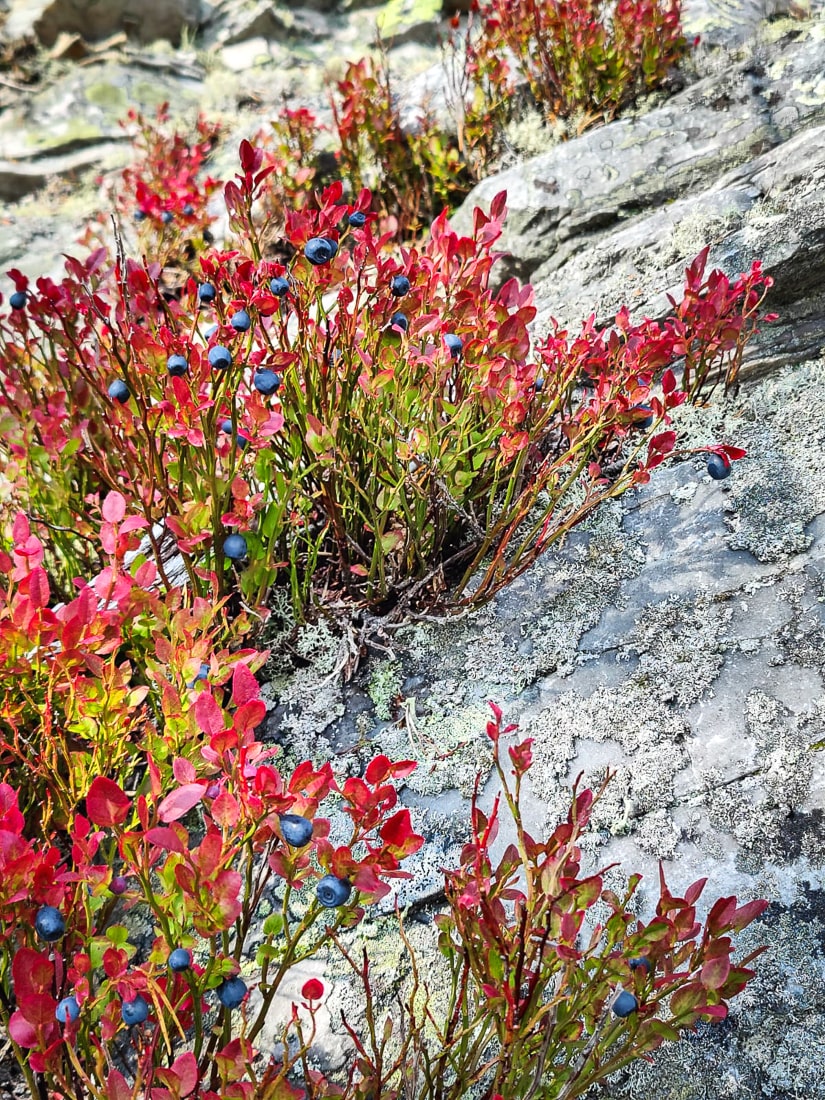

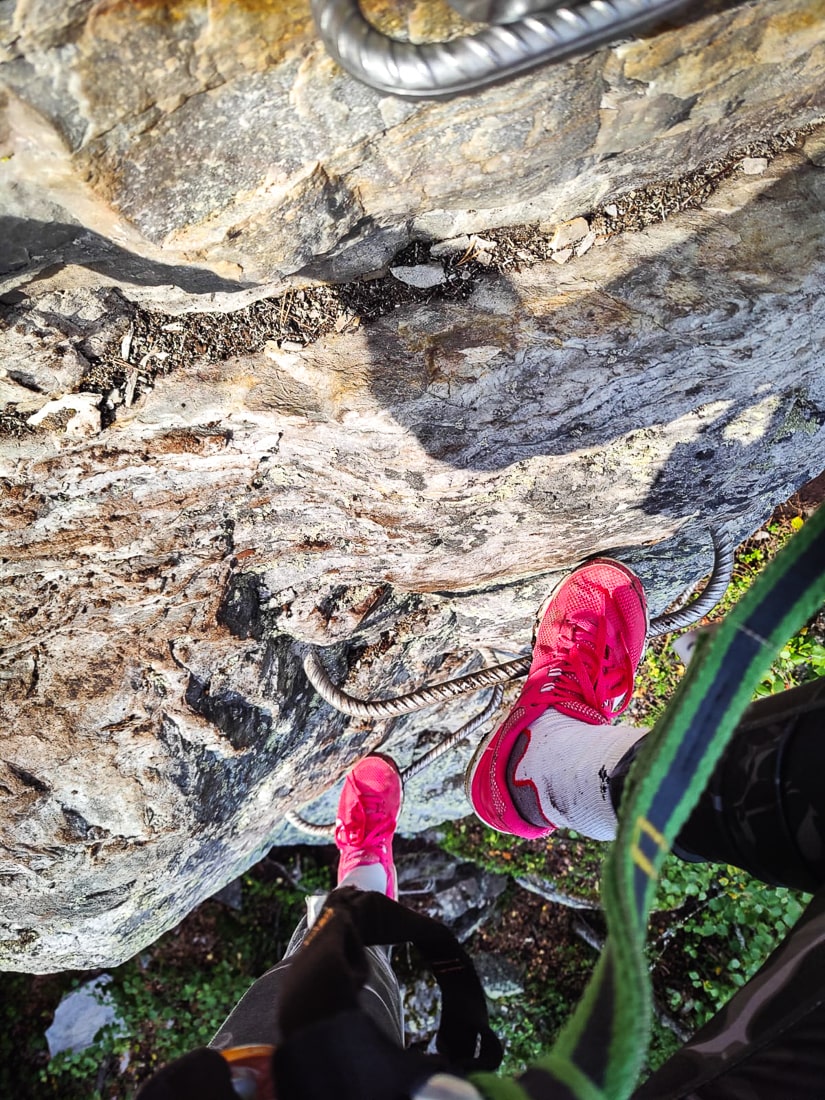
Visual instructions have been placed in necessary spots along the gorge in case anyone forgets what they learned during the practice run at the hut. The visual instruction is also useful for those who do not know how to read yet.
The route provides a roller coaster of emotions. The rugged cliff is always nearby since the safety wire only allows around a metre of freedom. The route is a mix of trails, soft turf and shrub, sharp rock, wires, and – during the ziplines – nothing! Many trees and cliffs get hugged to during the climb.
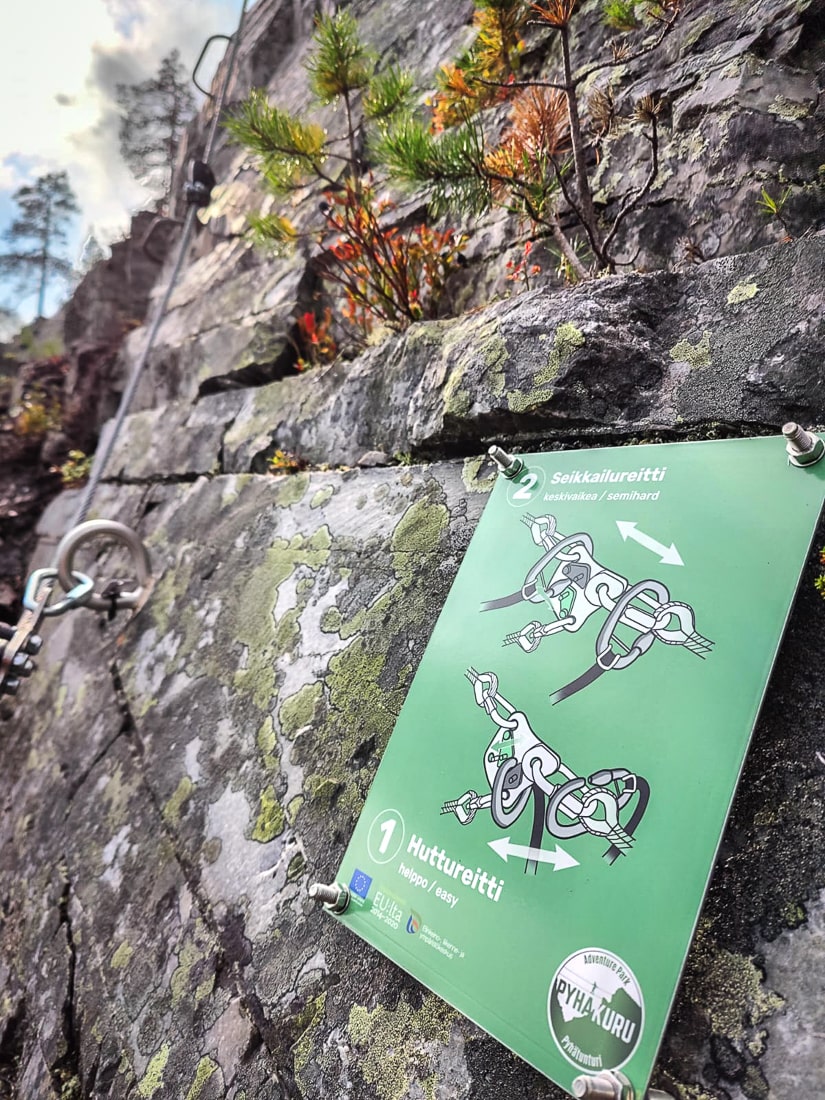
Completing the route definitely doesn’t involve pure focused concentration, though some specific sections are particularly exciting and require focus. Though many groups traverse the gorge at the same time, there’s no need to rush – everyone focuses calmly at their own pace. There is time to appreciate the autumn colours and snack on blueberries in peace. The views from above are majestic, and worth taking the time to look at as well. The starting point of the Pyhäkuru route is already high up the fell’s slope, and the views only improve as you rise up the cliff walls. Those waiting at the bottom can’t even imagine the open scenery that those who braved the route get to enjoy!
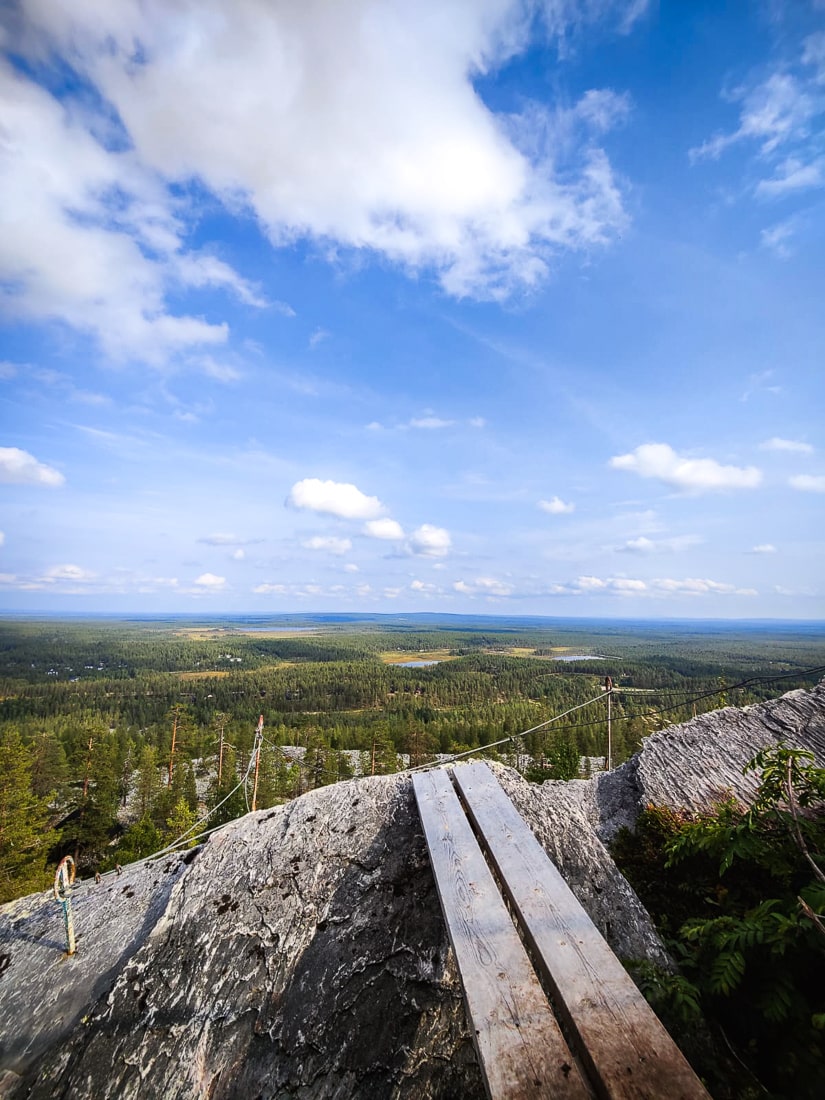
After some time, the adventurers appeared in sight between the rocks, and their friends waiting at the bottom could see their progress.
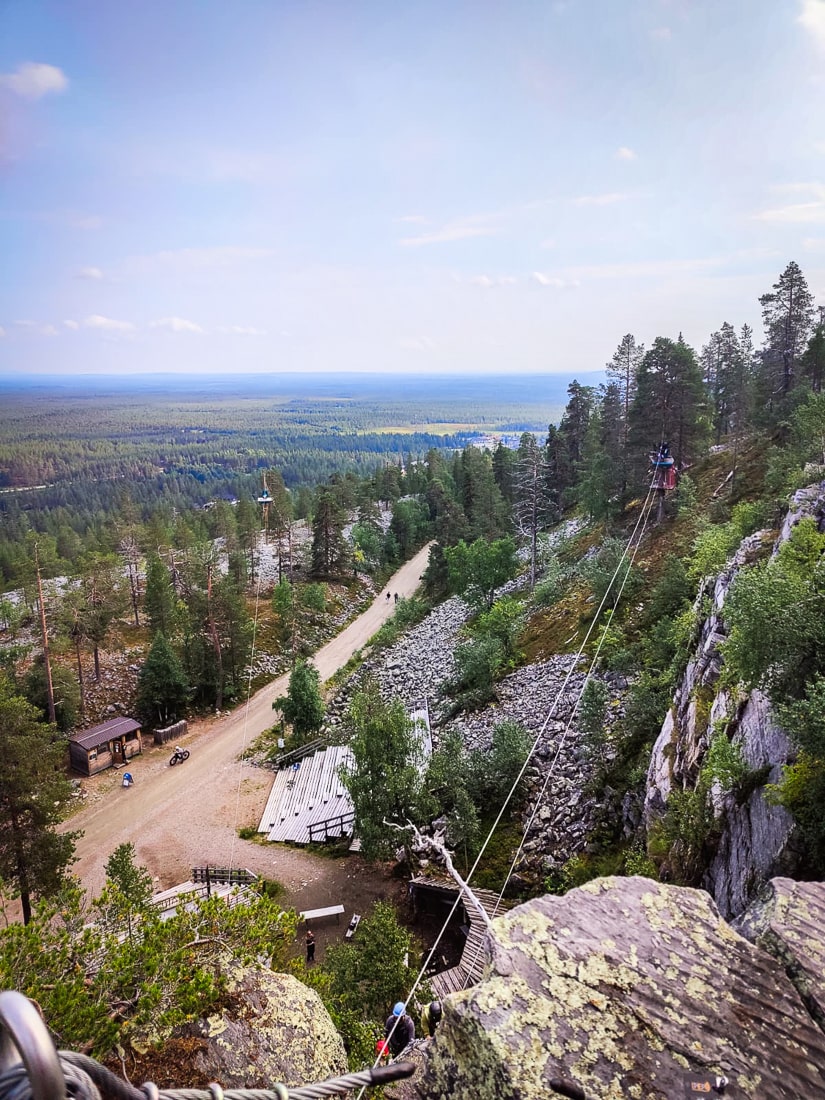
The starting point at the mouth of the gorge is covered with dangling rope courses and wires, where climbers either balance on top of the wires or move with them. A small child can be heard objecting to gliding down a slightly high zipline, but before the guide makes it to help the child is already bravely sliding down the long and high zipline without further thought.
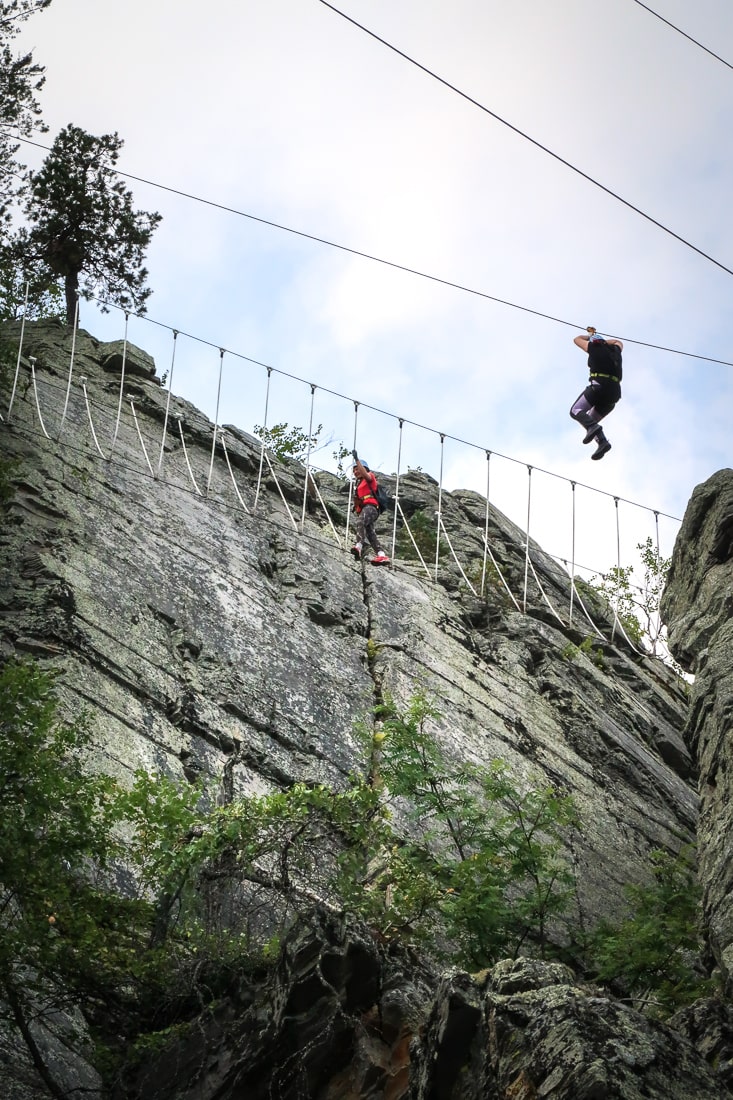
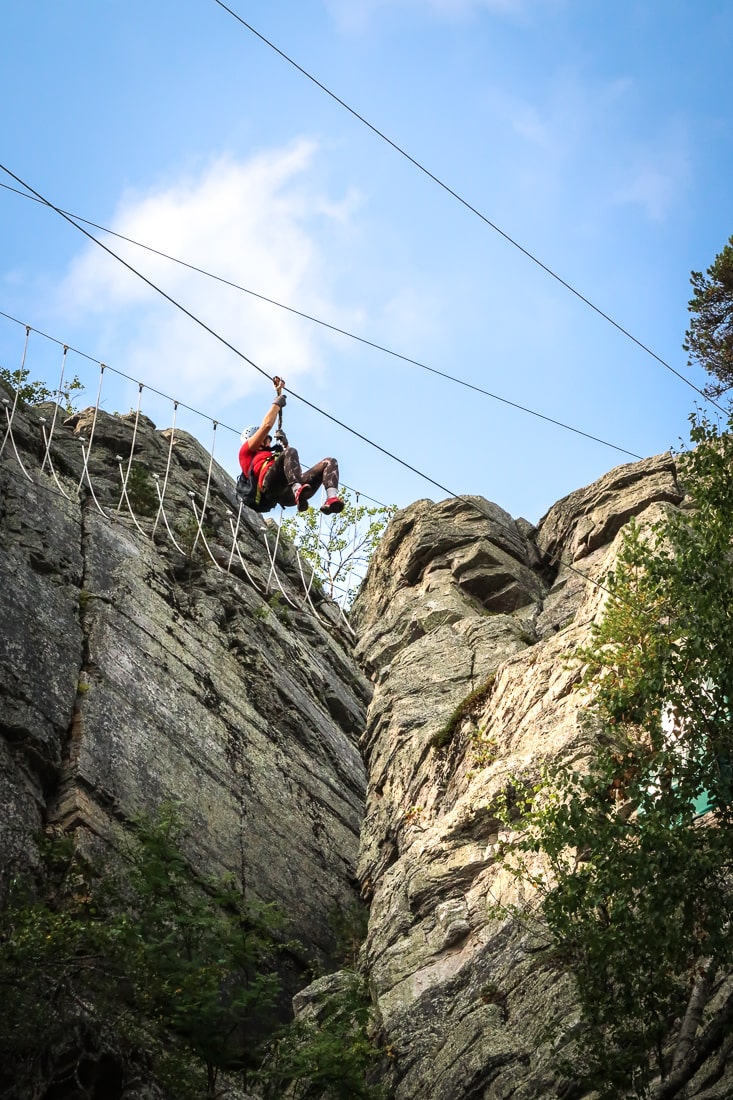
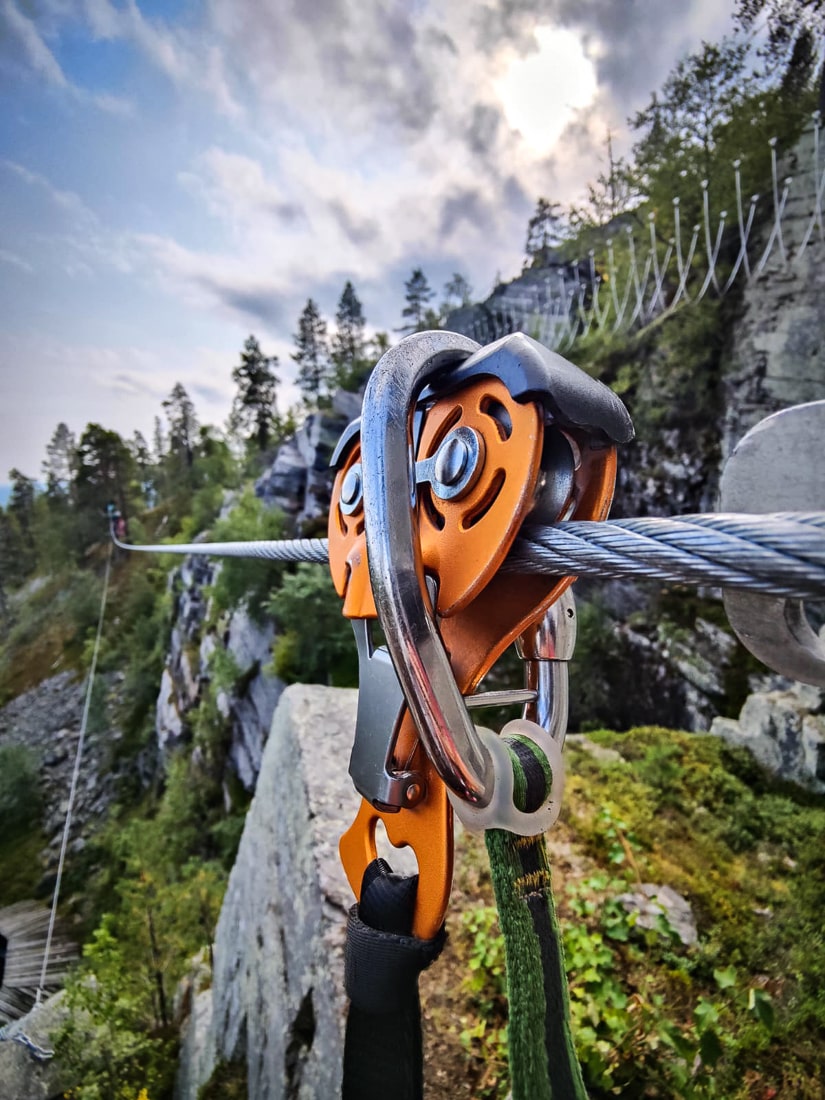
The longest zipline passes above the spectator stand to the other side of the road, acting as the grand finale of the route. The thrill of gliding such a long distance from the heights is only topped by the end, where part of the way passes between pinewood treetops. The zipline ends on a platform built around a post, where the safety wire is detached, and stairs descend to a stony ground and into the arms of the elegant forest. The guide greets the adventurers once again and suggests a second round, but this time we still have more planned for the day, so we finish up and get going to the marshland.
-Karo
Scenic trails of Tunturiaapa mire by e-fat
Once an exhilarated Karoliina was safely down from the zipline, we stopped by our accommodation at Pyhä Igloos briefly to change clothes and eat a quick snack before our next adventure. The distances between attractions at Pyhätunturi are conveniently short – if you’re not in a hurry, it’s easy to walk between places in the village. Our accommodation, Pyhäkuru, and our next destination, Bliss Adventure rental shop, are all a stone’s throw from each other.
At Bliss we were greeted by Artturi, who would be our e-fatbike expert and guide for the trip. This was my first time riding an electric fatbike, and admittedly during my adulthood I haven’t cycled much otherwise.
Though you should remember how to cycle forever once you’ve learned it once, the electric component of the bike made me nervous. I was scared that I would end up out of control and into a bush at the first rock or sharp bend. That’s why I was grateful that Artturi gave us a proper briefing on how to use the bike – he gives this briefing to all his customers. According to him, knowing the right way to cycle with an e-bike can be pivotal to the enjoyment of the sport. On the other hand, certain mistakes when using the bikes can deter the rider enough not to want to try it again.
To me, the most important lesson was learning what to do with the different gears and electric assist modes. We set the bikes to Eco-mode as we left, which means light assistance. We were taught that if the cycling feels too strenuous, we should first adjust the gears rather than playing with the electric assist modes. The Tunturiaava route ahead of us is apparently possible to cycle without changing from Eco mode at all, but we could test the more powerful modes during the trip if we felt like it. This made me feel more at ease, since I wasn’t sure how well I’d be able to shift between both the different gears and assist modes. Now, I could calmly concentrate on just the gears without thinking about the assist modes. Suddenly everything felt a lot simpler!
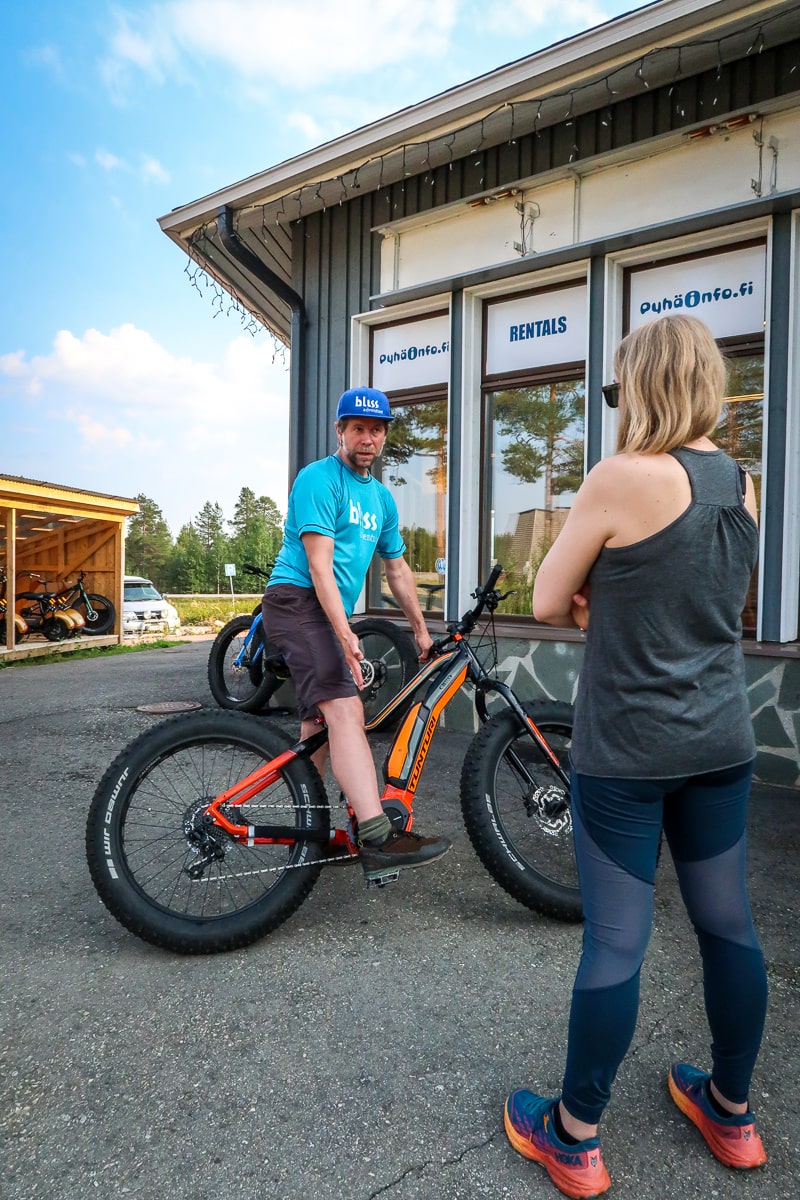
After the briefing we did a few rounds around the yard to be sure that the bike saddle was adjusted to the right height and helmets were firmly fitted on our heads. We also got silicon padding on the seat since I remembered that the few times I did cycle in my adulthood, I had a tendency to start feeling sore already while cycling. The padding turned out to be very effective – I wasn’t even sore during our horse-riding trip the next day.
We left for the trip directly from Bliss Adventures’ yard, the dirt path going directly into the forest. A few intersections and junctions, and we were on our way to the swamp. The narrow dirt trail twisted and turned in the beautiful pine forest, lined with a selection of potholes, rocks, puddles, and roots. The fatbike is a comfortably sturdy piece of equipment for this kind of terrain – even though I usually get nervous about anything that feels even slightly reckless, here I felt comfortable. Every once in a while, we passed by other hikers – a larger group of people, dog walkers, and to my delight even a person walking their cat!
Artturi told us that at Pyhä-Luosto national park there are a good amount of multi-purpose trails, meaning that you can both walk and cycle. According to him, this is a relatively new concept country-wide. In many areas in the past, cycling has been allowed only on separately marked bike trails, whereas nowadays he’s seen the trend shift towards allowing cycling on all routes where it isn’t specifically prohibited. If you’re planning a cycling trip to any national park, you can check route details on Nationalparks.fi.

As we left the forest, we rode along a blissfully wide trail of wooden planks to a small island at the edge of the marsh. I could have cycled this kind of trail forever, the elevated edges making me feel safe.
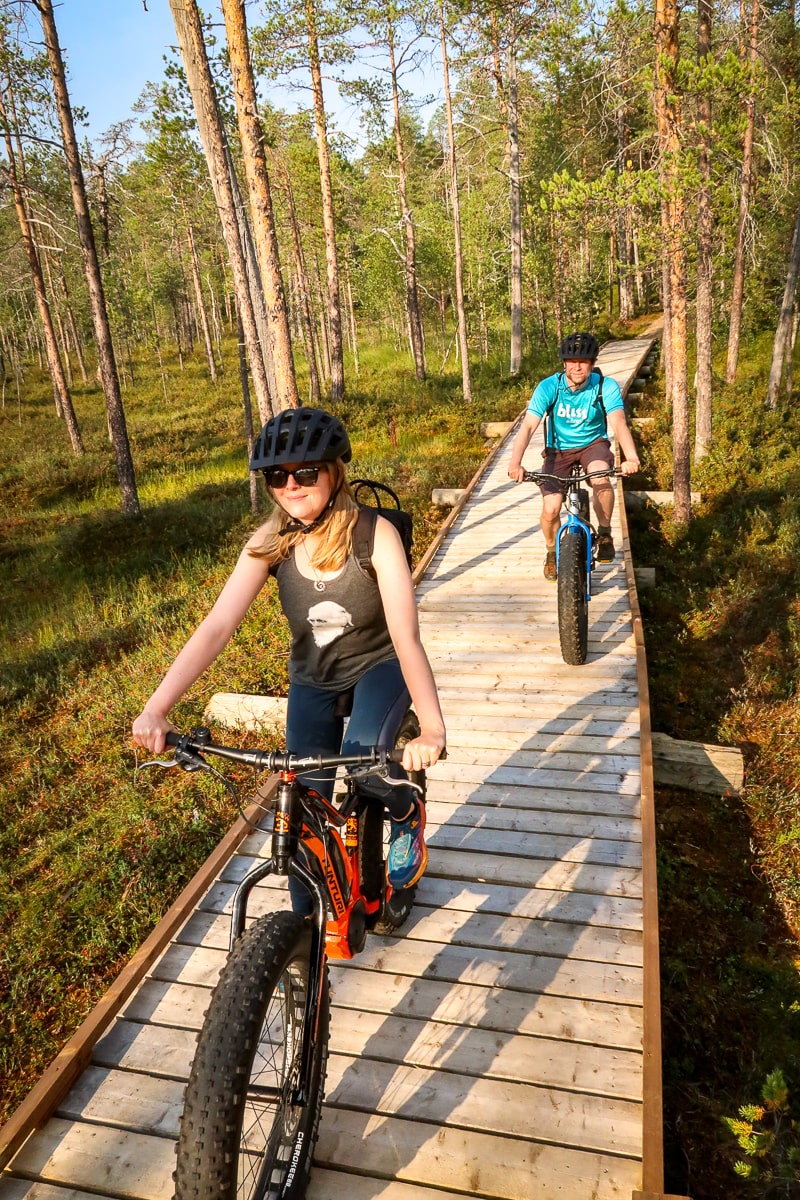
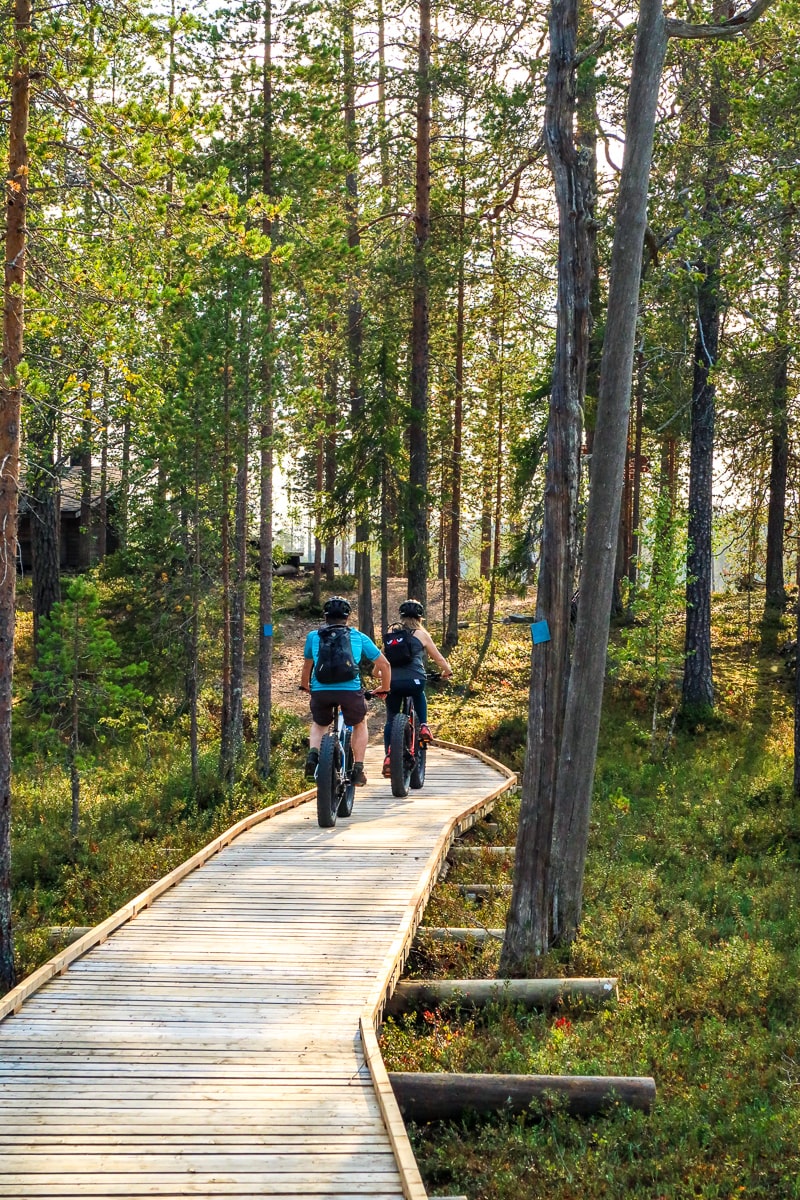
Waiting for us at the other end of the trail was a rest stop, Tiaislaavu, where we stopped to drink water and sit down for a moment. The clouds above gave us a sight to watch as they rolled up and revealed ever more sun from behind them. The sun shone down on the marsh and magnificently highlighted its deep, warm tones that already hinted at autumn. Some of the cloudberry leaves had turned their autumn “ruska” colour, wine red. You could already spot little bits of red here and there in the green cranberry bushes.
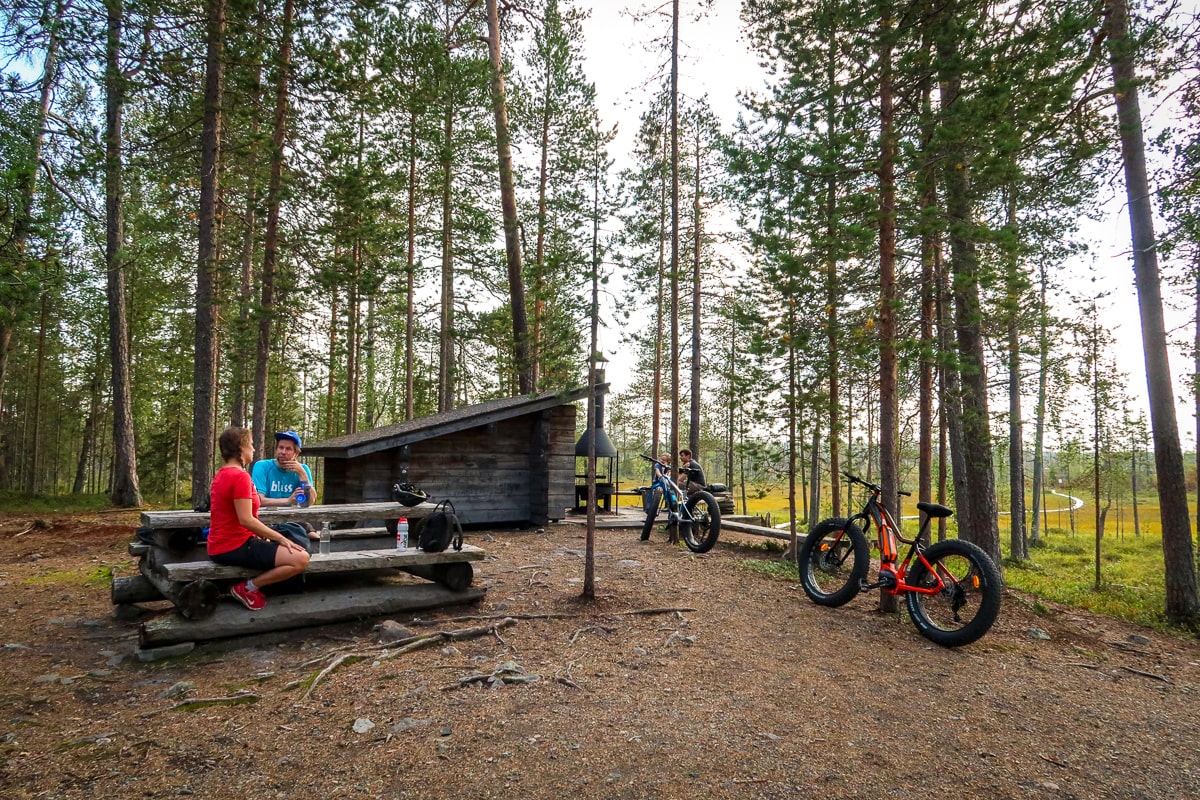
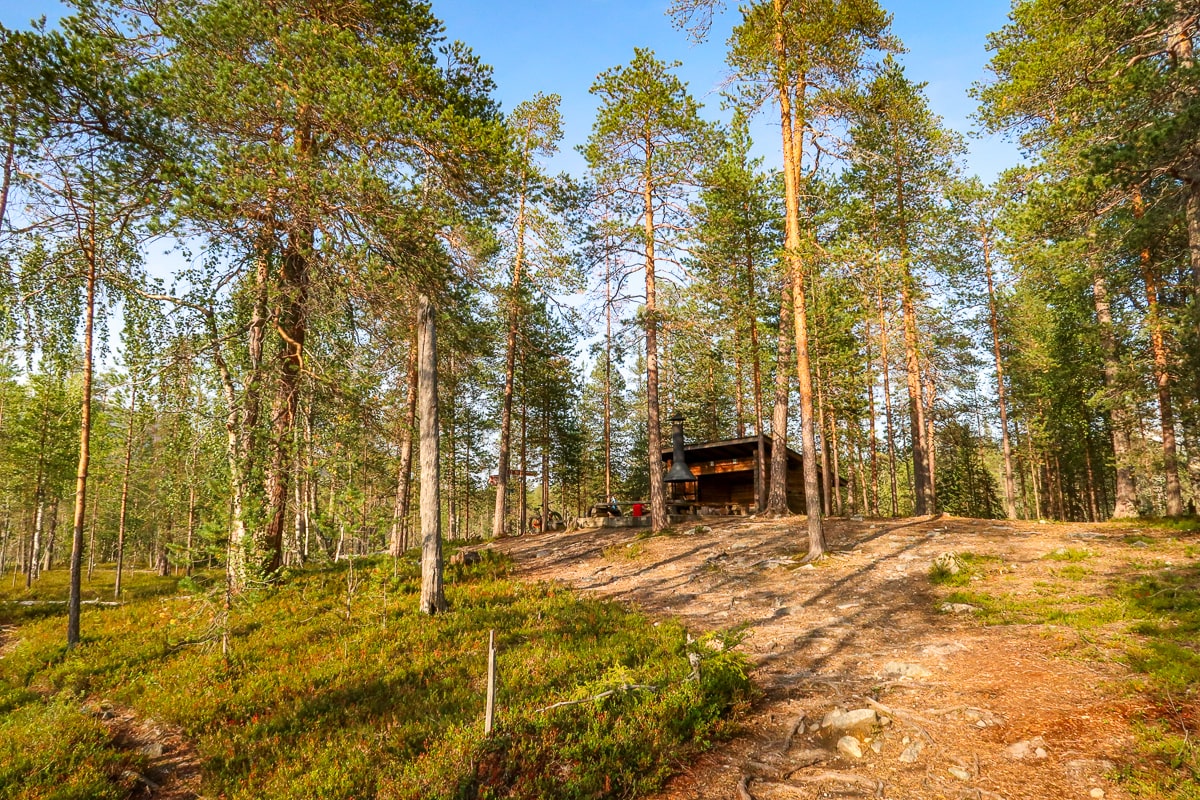
There is a trail of narrow wooden planks that continues from Tiaislaavu straight to the marsh. I did a quick walk around here to photograph the area. When the time came to get back on our bikes, we continued shortly along the forest path until getting to a point where we could test how the marsh felt by bike.
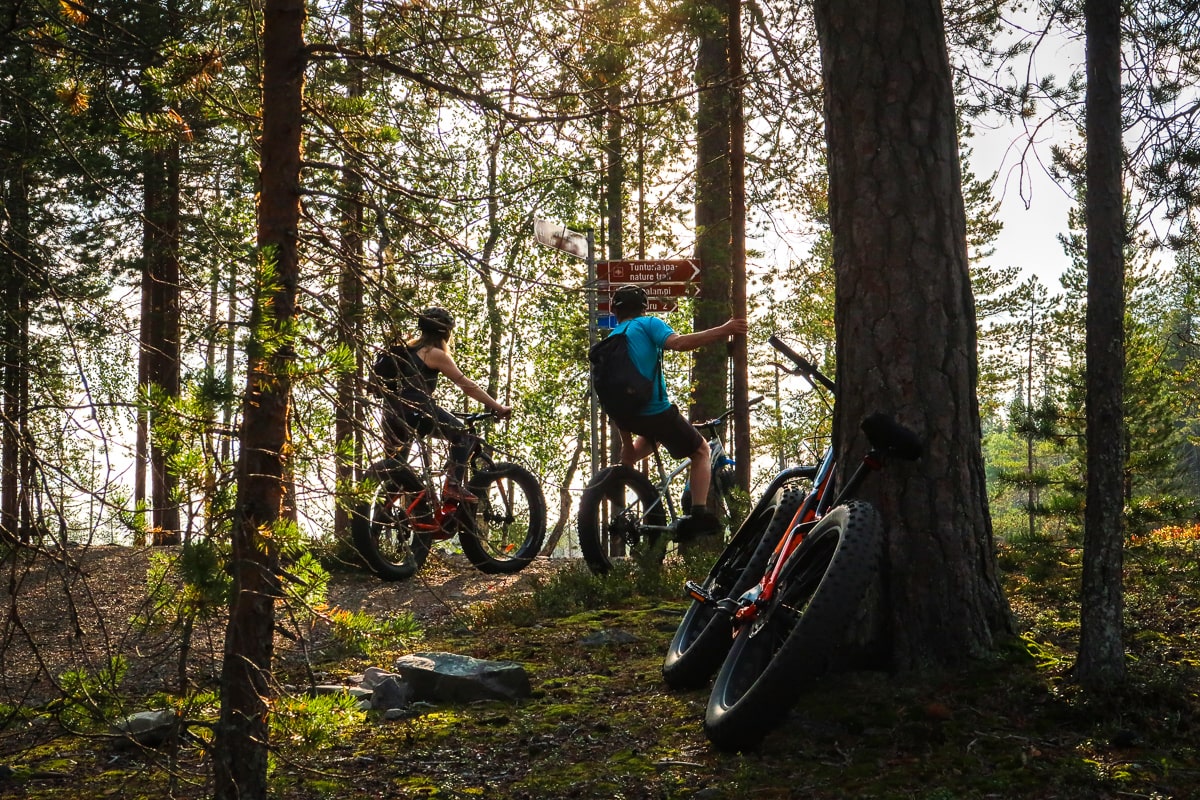
The trail of wooden planks ahead of us looked comfortably wide, but as I set off I noticed that with speed it actually felt fairly narrow – particularly when it narrowed even more after a short stretch. Artturi advised us to look further ahead rather than at what was directly in front of us. Though I believed his advice would help, my eyes didn’t want to cooperate. I cycled for some time in cautious concentration and could feel the beads of perspiration forming on my temples.

I soon decided to move on to the second activity, namely carrying the bike, which is a fundamental part of the sport according to Artturi. Even on routes that allow cycling, there are often sections that are unsuitable for beginners, some even for experienced cyclists. Carrying the bike is required for these sections, and I decided that now was the time. As I jumped off in a semi-controlled manner and felt the legs of the wooden planks under my feet instead of the marsh (huh!), I was able to take a proper look around at the landscapes. And how beautiful they were!
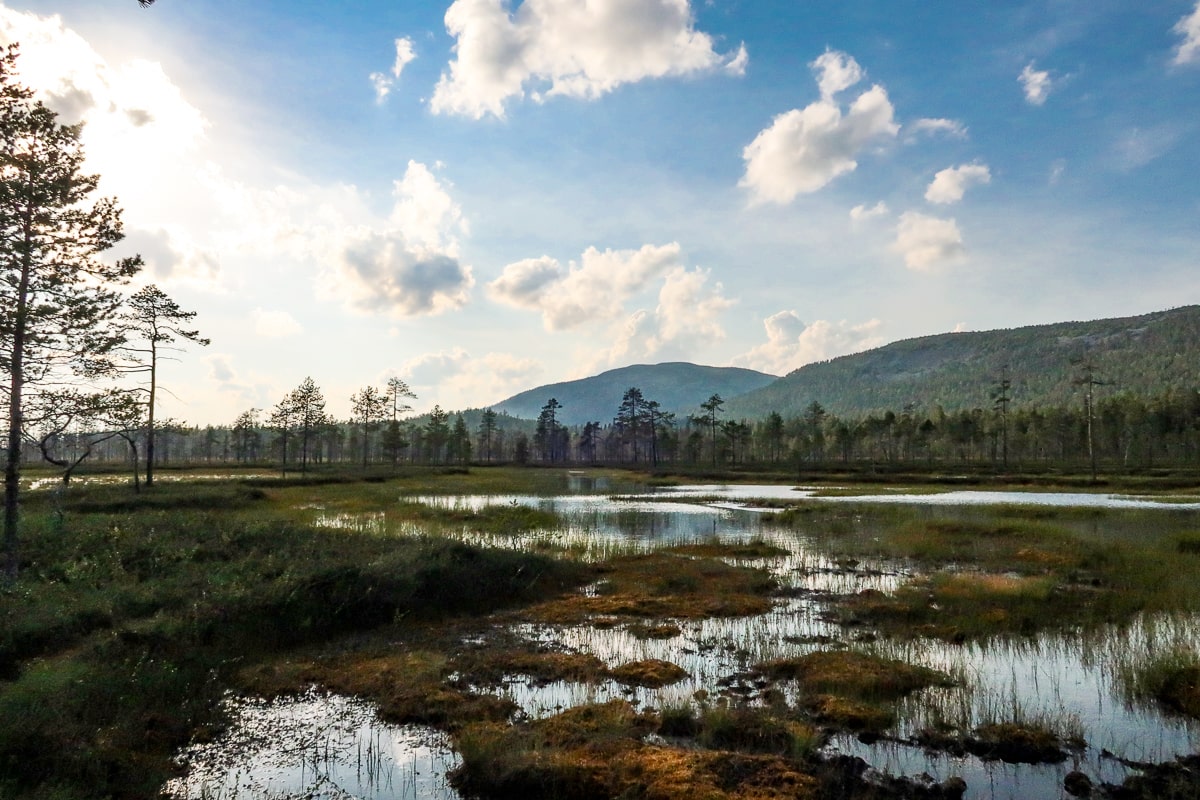
Karo, who is a lot bolder than I am, cycled over the wooden planks with a smile on her lips! But even she admitted to being slightly nervous. Either way it went well – no one fell into the marsh. Even if someone had, it would have been a soft, cooling, and probably unforgettable experience on a soft and warm summer day in Lapland.
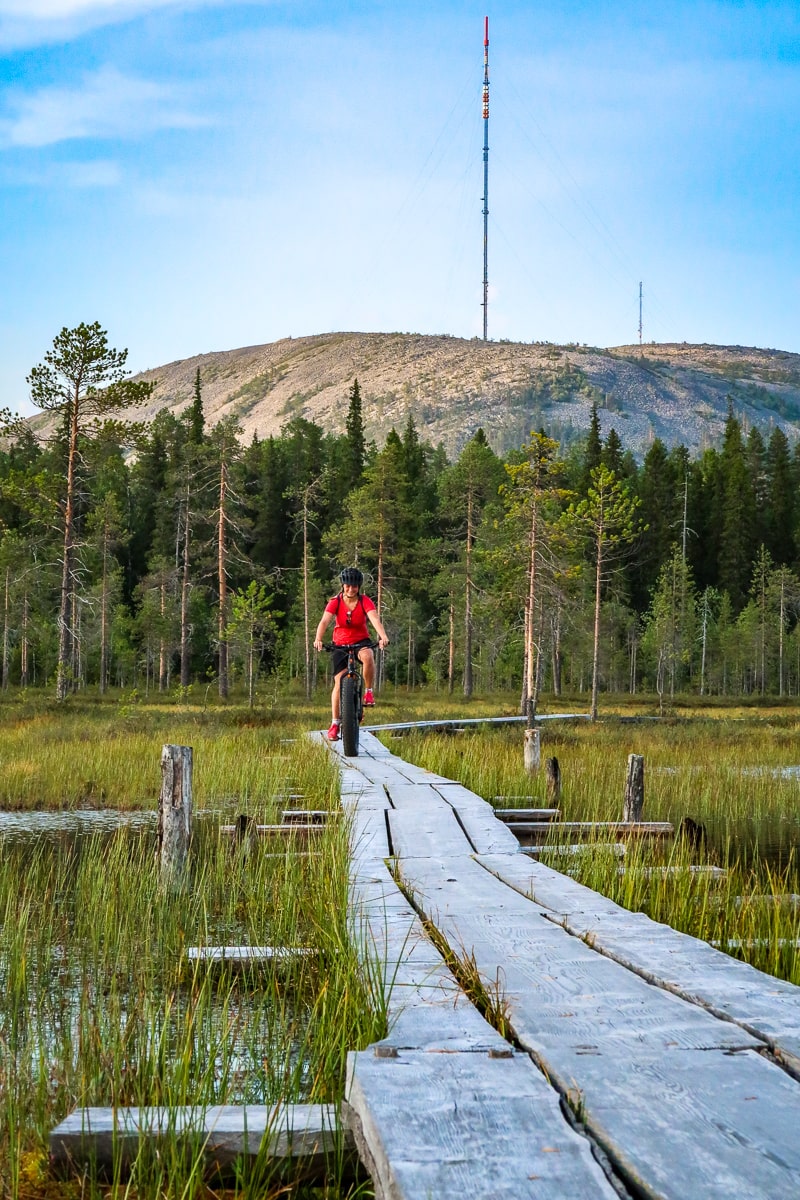
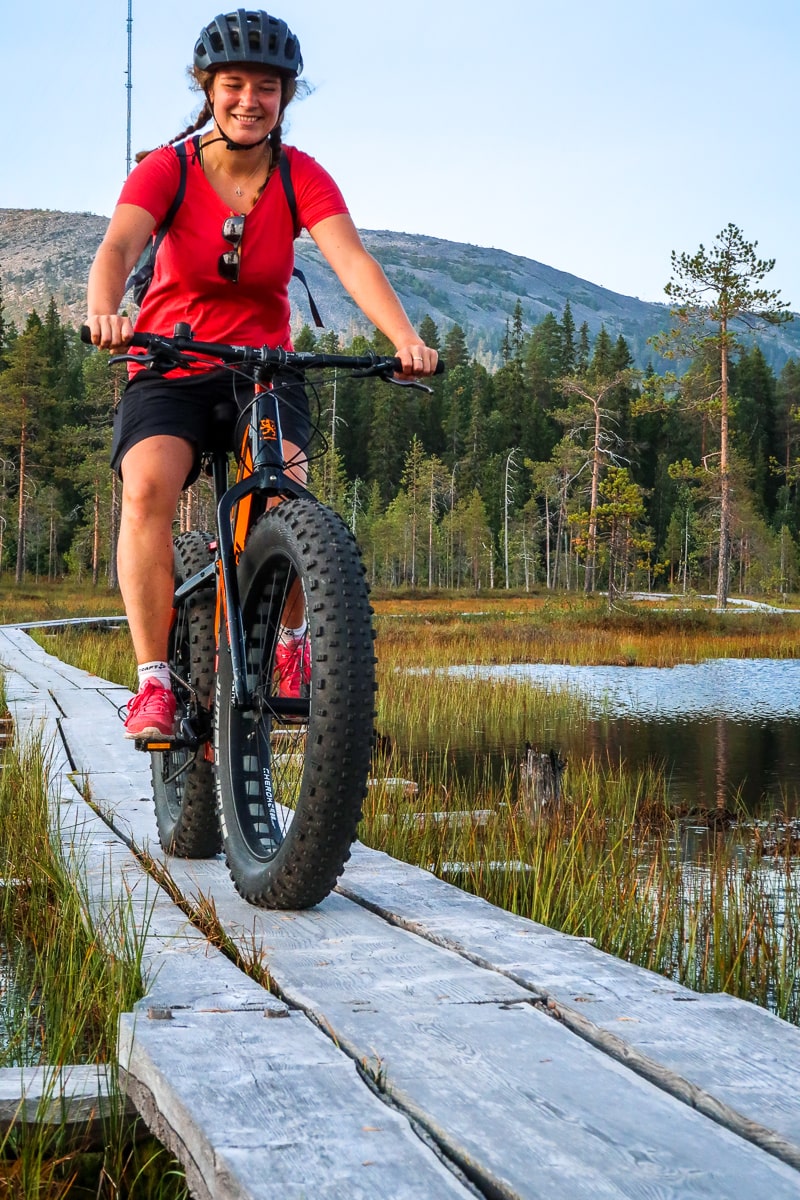
At the marsh, we took a moment to admire the view. We were on our way to the bird-watching tower, which stands tall in the middle of the marsh. The marshy blue ponds shone colourfully among ochre tussocks, reflecting the blue sky and giving the landscape a painting-like appearance. The huge fells rising around the edges only added to the allure.
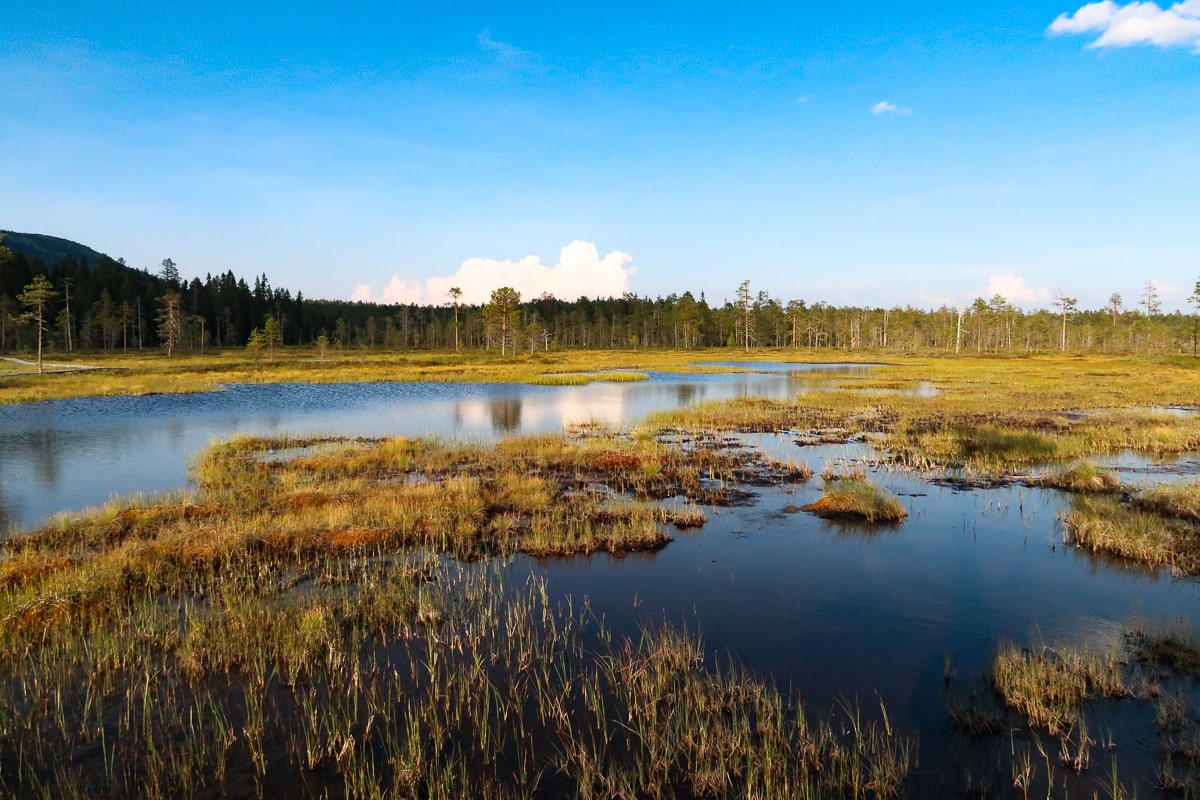

The wooden planks were narrow enough that even by foot I would have felt like sticking closely to the sides when passing others. With bikes, there was an even greater need for it. Luckily there were spots at suitable intervals where you could lift the bike and yourself to the side when needed so that oncoming hikers could easily pass. Passersby were mainly cheerful nature lovers walking alone or in pairs. As with any hiking trail, a cheerful greeting always creates a pleasant atmosphere. Those were definitely not lacking on this trip!
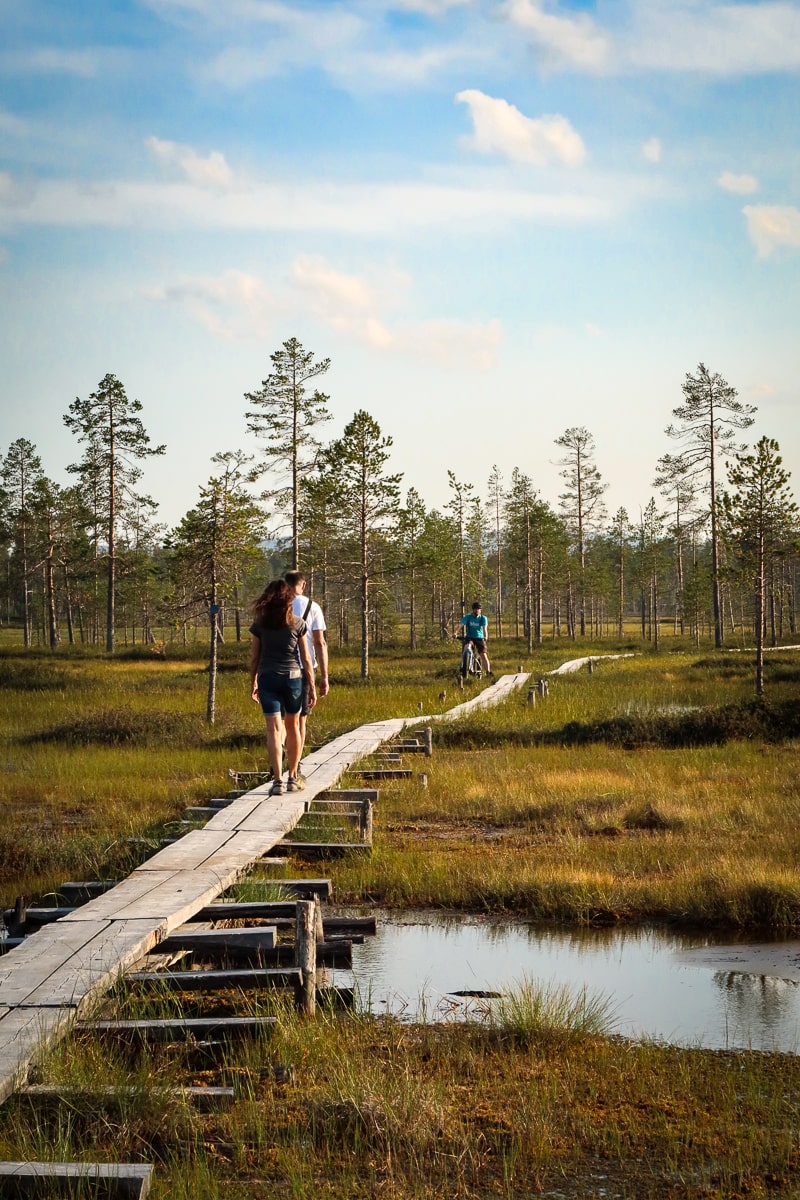
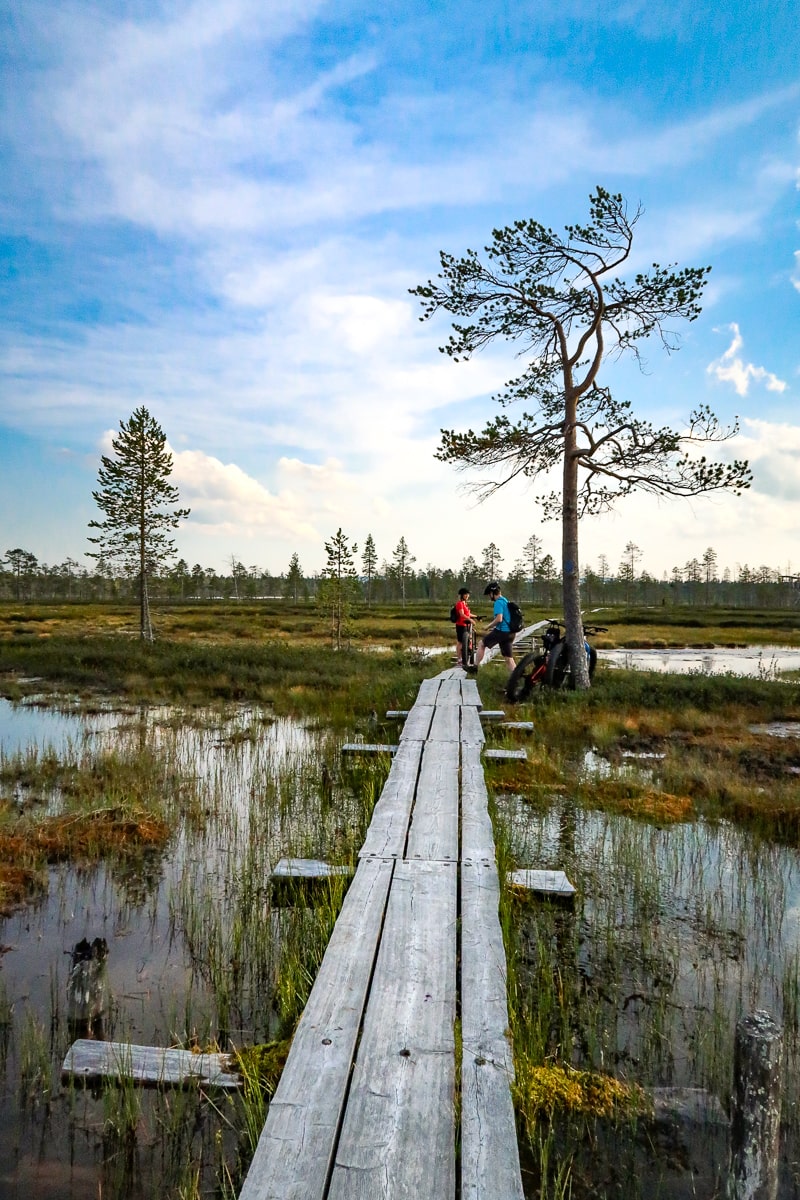
The forest of silver trees growing in the marshland was exceptionally beautiful and picturesque, especially in the glow of late summer’s warm light. Karo climbed up to the bird-watching tower to take a picture of me while I was still walking my bike towards the tower.

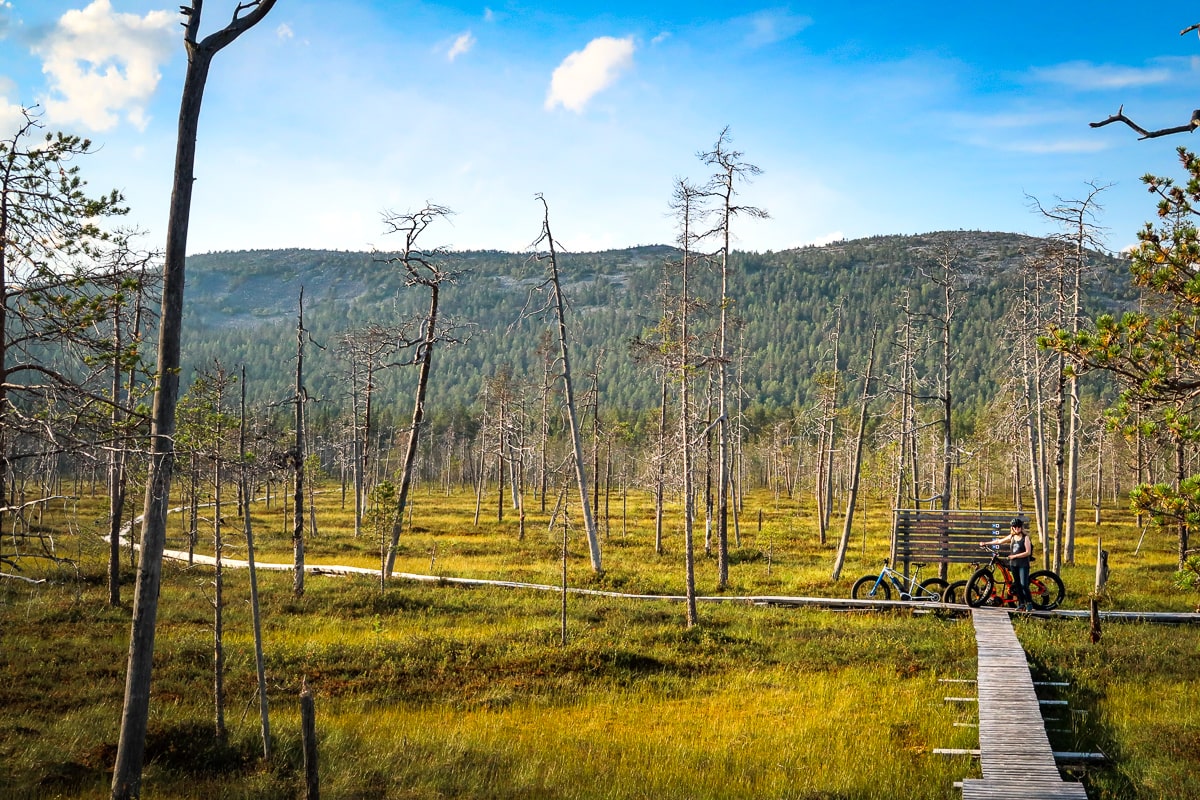
From the bird-watching tower, the official Tunturiaava route (total seven kilometres in length, more info at Nationalparks.fi) would have continued onwards. We unanimously decided to turn back and go the same way we had come. I walked the bike back to the edge of the forest while absorbing as much of the fell landscape as I could. After this trip, I knew it might be a short lifetime before I get the chance to return to Lapland’s nature. I was also thankful that Artturi had chosen precisely this beautiful route. Somehow, though I lived near Sodankylä for a good few years, I never chanced upon this trail. This is definitely among Pyhä-Luosto national park’s most stunning routes, boasting surprisingly striking landscapes with minimal elevation difference.

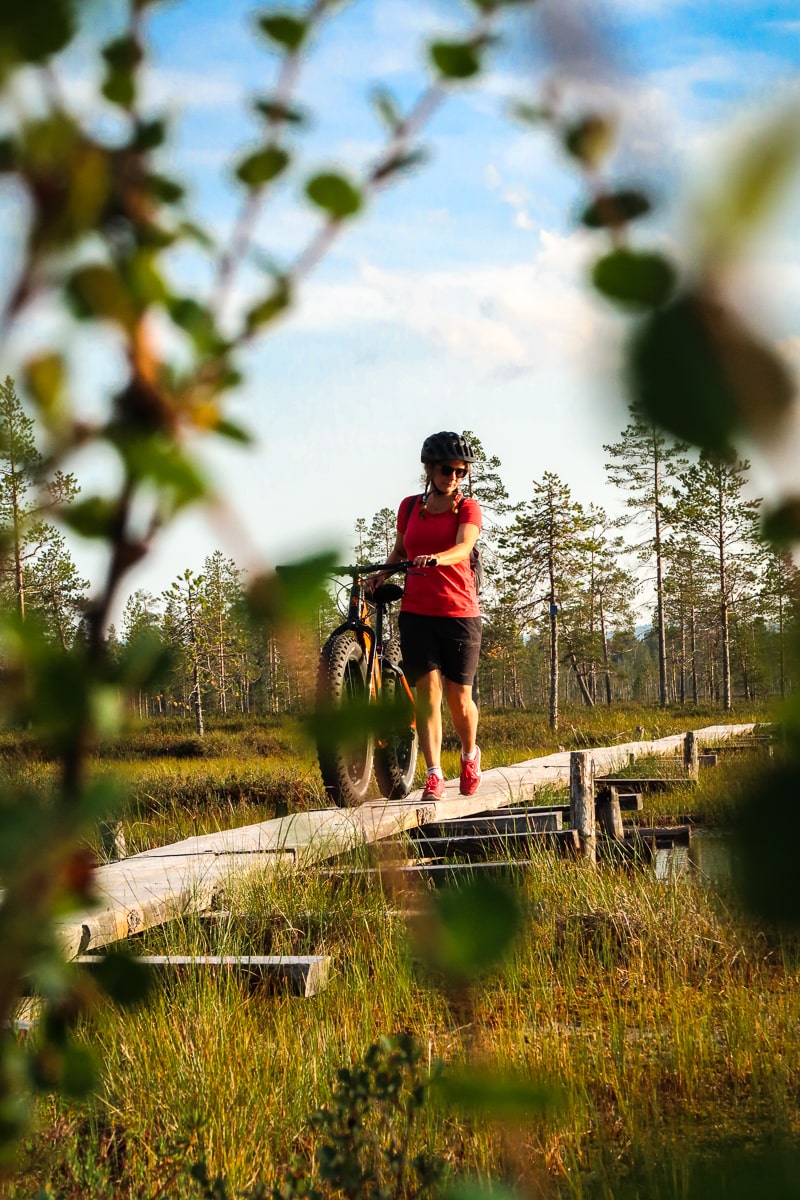
Our return to the rental shop went smoothly, following the old rule that the way back is always half as short as the way there. We thanked Artturi for the wonderful guiding and perfect choice of destination. After the trip I was left with the feeling that I would enjoy renting e-fats more often in the future. This particularly pleased my partner, who has his own e-bike and has so far had to cycle to places without me, since I haven’t had enough confidence with e-bikes, or more specifically my ability to use them properly. It would be fun to try other easy routes like the one we did now at Tunturiaapa. E-fat rentals are popping up these days in many areas such as national parks. I personally prefer renting, as I don’t have to worry about the maintenance and fixing of such expensive equipment. Renting is wonderfully worry-free.
After saying goodbye to Artturi, we stopped by the campsite and then went to eat. After comparing the vegetarian options, prices, and opening hours of the area’s restaurants on the internet, we ended up choosing restaurant Uula. The vegetarian burger there was fantastic!
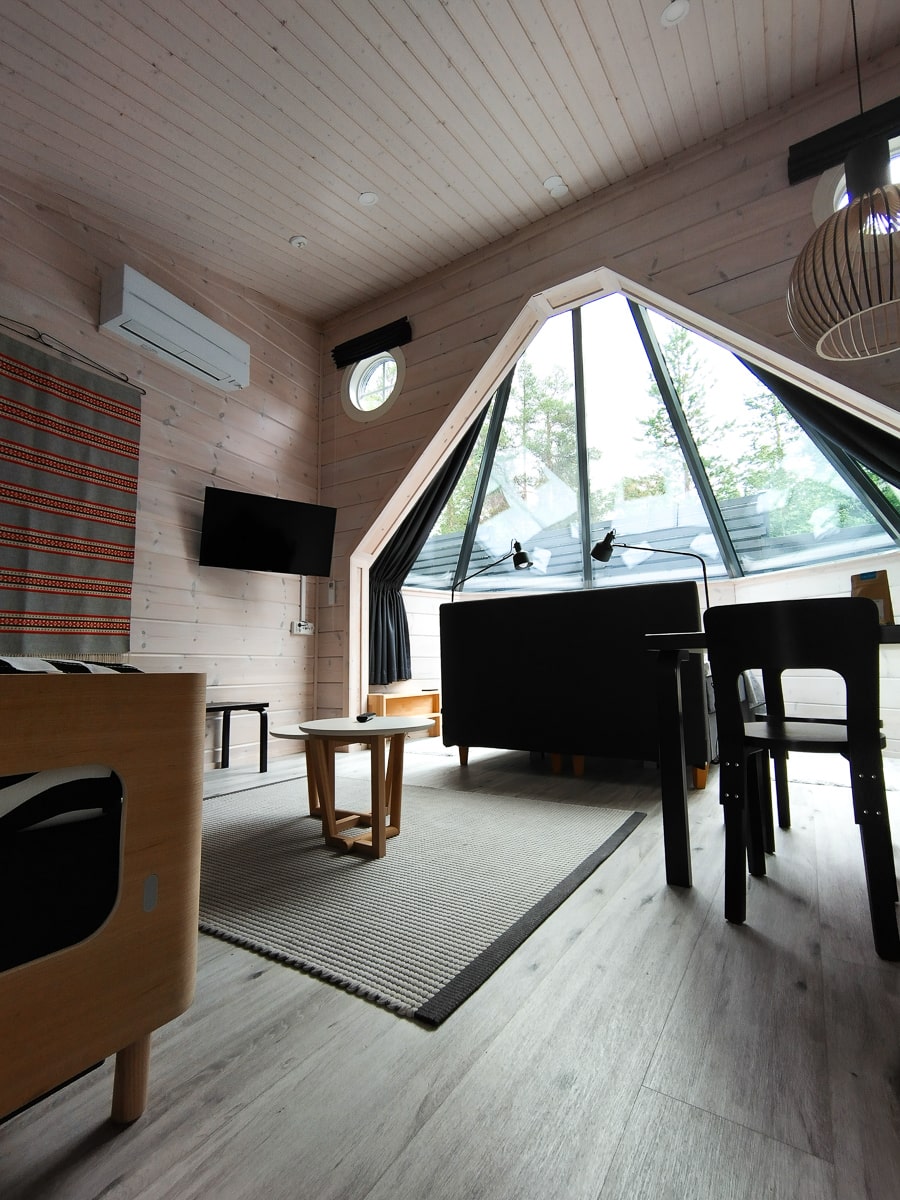
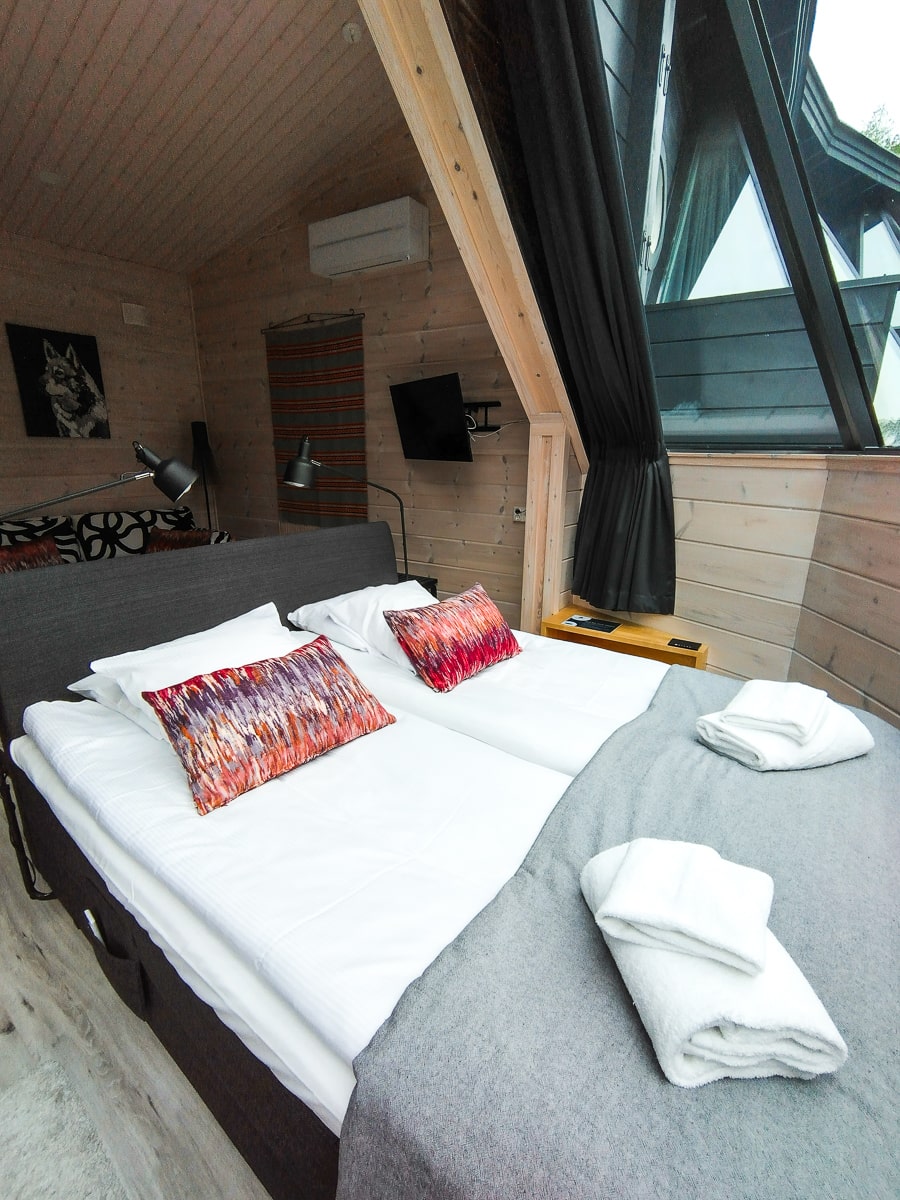

After a long day, it felt wonderful to watch the sky darken from the comfort of Pyhä Igloos’ adjustable beds. We were hoping for Northern lights, but they didn’t appear this time – at least before we fell asleep. I did find a few familiar constellations from the star-filled sky though, which made me feel at home.
-Jonna
The following day’s plan involved a short transfer to Kemijärvi and activities included horseback riding and SUP-boarding. Story on that coming up next!
Translated by Karolina Salin
Check out all the posts from this series:
Part 1: Reach the wilderness overnight by train – paddle at sunset in Salla
Part 4: Summer at Kemijärvi on horseback & SUP-boarding on the superb Kalkonniemi beach
Part 5: The outskirts of Riisitunturi National Park – a journey through Posio’s untouched wilderness
See also
Adventure Park Pyhäkuru Lapland







Leave a Reply
Want to join the discussion?Feel free to contribute!